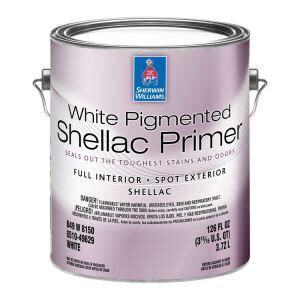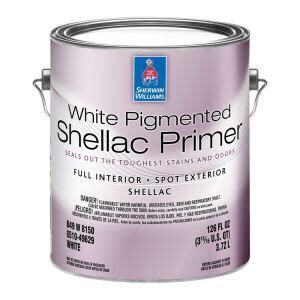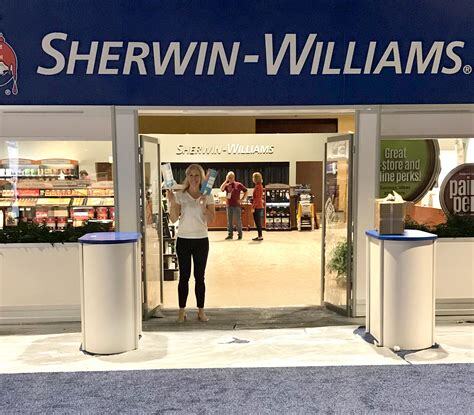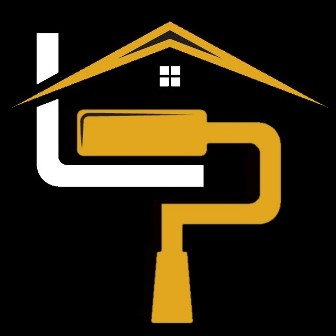Sherwin-Williams Shellac Primer – Superior Stain Blocking

Key Highlights
- Exceptional Stain Blocking: Effectively seals tough stains like smoke, water, and tannins.
- Versatile Application: Suitable for a wide range of surfaces, including wood, drywall, and metal.
- Quick Drying Time: Dries to the touch within 30 minutes, allowing for fast recoating.
- Superior Adhesion: Ensures top coats adhere perfectly, resulting in a long-lasting finish.
The Essential Role of Primer in Painting Projects
Painting projects can be as straightforward or as complex as you make them, but one thing remains constant: the need for a quality primer. As someone who has spent years perfecting the art of painting, I can tell you that skipping primer is a mistake you don't want to make. Let me share a story about a time I was dealing with some stubborn stains on a client's walls. Despite trying to cover them with multiple coats of paint, they kept showing through. That's when I realized the true value of a high-quality primer like Sherwin-Williams Shellac Primer.
The Importance of Using a Quality Primer
Protective Barrier
Primers serve as a protective barrier between the surface and the top coat. They help to seal the surface, preventing the paint from soaking into porous materials like wood or drywall. This not only saves paint but also ensures a consistent finish. In one of my projects, the walls had severe smoke stains. Applying a coat of Sherwin-Williams Shellac Primer completely sealed those stains, providing a clean slate for the paint.
Surface Preparation
A good primer prepares the surface for painting by creating a smooth, uniform base. It can fill in small imperfections and even out the texture, which is crucial for achieving a professional-looking finish. I remember a kitchen renovation where the cabinets had multiple layers of old paint and uneven surfaces. The Sherwin-Williams Shellac Primer helped to level out those imperfections, making the final paint job look flawless.
Why Choose Sherwin-Williams Shellac Primer?
Exceptional Stain Blocking
Sherwin-Williams Shellac Primer is renowned for its exceptional stain-blocking properties. It can seal in tough stains such as smoke, water, and tannins, ensuring they don’t bleed through the top coat. For instance, I worked on an old house with water-stained ceilings. Using this primer effectively blocked those stains, allowing the new paint to look fresh and clean without any discoloration.
Versatile Application
This primer is versatile and suitable for various surfaces, including wood, drywall, and metal. Whether you’re working on a wooden dresser, drywall repairs, or metal frames, Sherwin-Williams Shellac Primer adheres well and prepares the surface for painting. In a project involving mixed materials, this primer provided consistent results across all surfaces, saving time and effort.
Quick Drying Time
One of the standout features of Sherwin-Williams Shellac Primer is its quick drying time. It allows for fast recoating, which means you can complete your painting projects faster without compromising on quality. I once had a tight deadline for a commercial space makeover. The quick drying time of this primer allowed me to apply the top coat sooner, meeting the deadline without any issues.
Superior Adhesion
Superior adhesion is another critical benefit of Sherwin-Williams Shellac Primer. It ensures that the top coat adheres perfectly, leading to a durable and long-lasting finish. In a high-traffic hallway project, this primer provided a strong bond between the surface and the paint, resulting in a finish that withstood heavy use without peeling or chipping.

Understanding Stain Blocking
As a seasoned painter, I can't stress enough the importance of understanding stain blocking, especially when dealing with surfaces that have seen their fair share of life's messes. Let's dive into the types of stains you might encounter and how they can impact your paint finish.
Types of Stains
- Smoke Stains: Common in homes with fireplaces or after a fire incident, these stains are notoriously tough to cover.
- Water Stains: Often from leaks or floods, these can cause unsightly yellow or brown marks.
- Tannins: Found in wood, these natural oils can seep through paint and cause discoloration.
- Grease Stains: Frequently found in kitchens, these stains can be stubborn and resistant to regular cleaning and painting.
Impact on Paint Finish
Stains can bleed through and ruin your final paint job if not properly addressed. Imagine spending hours perfecting your walls only to see yellowish or brownish spots seeping through your beautiful finish. This not only affects the aesthetics but also the longevity of the paint job. For example, in a recent project, I encountered severe smoke stains on a client's ceiling. Using a quality stain-blocking primer saved the day, ensuring a flawless finish that impressed everyone.
The Science Behind Shellac-Based Primers
Shellac Composition
Shellac is a natural resin secreted by the lac bug, which is processed and dissolved in alcohol to create a versatile and effective primer. This natural composition makes shellac a fantastic option for blocking stains because it forms a durable, impenetrable barrier.
Blocking Mechanism
Shellac-based primers excel at stain blocking due to their ability to seal surfaces thoroughly. When applied, they dry quickly to form a hard shell that locks in stains and prevents them from bleeding through the top coat. This blocking mechanism is particularly effective for severe stains that other primers might struggle with. I remember a time when a client’s house had water stains from a leaky roof. Using a shellac-based primer like Sherwin-Williams Shellac Primer, we managed to completely seal the stains, allowing for a smooth and pristine topcoat.
Comparison to Other Primers
Shellac-Based Primers
- Pros: Exceptional stain blocking, fast drying, versatile for various surfaces.
- Cons: Strong odor during application, requires alcohol for cleanup.
Oil-Based Primers
- Pros: Good stain blocking, durable, excellent for sealing porous surfaces.
- Cons: Longer drying time, stronger odor, more difficult cleanup with solvents.
Water-Based Primers
- Pros: Low odor, easy cleanup with water, fast drying.
- Cons: Less effective at blocking severe stains compared to shellac and oil-based primers.
In Our Experience:
"Selecting the right primer has been a game-changer for achieving professional-grade results on various painting projects. We once tackled a high-traffic hallway using a primer renowned for its quick drying time and superior adhesion. The outcome was not only visually stunning but also durable, withstanding daily wear and tear with ease. This success story underlines the importance of not just any primer, but the right primer, for ensuring both beauty and longevity in painting projects."
Application Tips for Sherwin-Williams Shellac Primer
When it comes to achieving a professional, long-lasting paint job, using the right primer is crucial. Sherwin-Williams Shellac Primer is a top choice for many due to its superior stain-blocking properties and versatility. Here are some expert tips on how to apply this primer effectively to ensure the best results.
Surface Preparation
Proper surface preparation is the foundation of any successful painting project. Before applying Sherwin-Williams Shellac Primer, it’s essential to clean and sand the surfaces thoroughly.
Cleaning the Surface
First, remove any dirt, grease, or old paint flakes from the surface. Use a mild detergent solution for cleaning and rinse thoroughly with water. Let the surface dry completely. I remember a project where we neglected a thorough cleaning, and the old grime caused adhesion issues later on.
Sanding
After cleaning, lightly sand the surface to ensure it’s smooth and ready for priming. Sanding helps to create a better grip for the primer, ensuring it adheres well. Use fine-grit sandpaper and sand in the direction of the grain for wooden surfaces.
Application Techniques
Applying Sherwin-Williams Shellac Primer smoothly and evenly is key to achieving a flawless finish. Here are some tips to get it right:
Tools
- Brush: Use a high-quality, natural-bristle brush for intricate areas and edges.
- Roller: A short-nap roller is ideal for larger, flat surfaces.
- Sprayer: For a smooth, even coat on extensive surfaces, consider using an airless sprayer.
Technique
- Stir Well: Always stir the primer thoroughly before use to ensure a consistent texture.
- Apply Thin Coats: Apply the primer in thin, even coats. This helps prevent drips and ensures better coverage. I recall a project where we applied too thick a coat, which led to an uneven surface that required additional sanding and priming.
- Brush and Roll in One Direction: For the best finish, apply the primer in one direction. This technique helps to avoid visible brush strokes or roller marks.
Drying and Recoating
Knowing the appropriate drying times is essential to avoid issues like peeling or blistering.
Drying Time
Sherwin-Williams Shellac Primer typically dries to the touch in about 30 minutes. However, it’s best to wait at least 1 hour before applying a second coat or topcoat.
Recoating
For best results, apply the topcoat within 2 hours after the primer has dried. If you wait too long, the primer might lose its tackiness, affecting the adhesion of the topcoat.
Safety Precautions
Safety should always be a priority when working with primers and paints.
Ventilation
Ensure your workspace is well-ventilated. Open windows and use fans to circulate air, especially since shellac primers can have strong odors.
Protective Gear
Always wear protective gear, including gloves, safety glasses, and a mask, to protect yourself from fumes and potential splashes.
Case Studies and Success Stories
Residential Projects
One of our most memorable residential projects involved a historic home with severe water stains on the ceiling. The stains had seeped through multiple layers of paint. Using Sherwin-Williams Shellac Primer, we were able to seal the stains effectively. The final paint job looked flawless, and the homeowners were thrilled with the transformation.
Commercial Projects
We also worked on a commercial kitchen renovation where grease stains were a significant issue. Regular primers failed to cover the stains, but Sherwin-Williams Shellac Primer sealed them perfectly. The new paint job has held up well, even in the high-traffic, high-moisture environment of the kitchen.

Common Challenges and How to Overcome Them
When it comes to achieving a flawless paint job, using a high-quality primer like Sherwin-Williams Shellac Primer is crucial. However, even with the best products, challenges can arise. Here, we'll address some common issues and how to overcome them, leveraging the expertise of Lightmen Painting.
Handling Persistent Stains
Smoke and Water Stains
Smoke and water stains are notoriously difficult to cover. They can bleed through layers of paint, ruining the finish. Sherwin-Williams Shellac Primer is specifically designed to block these tough stains effectively.
- Solution: Apply a thin coat of Shellac Primer over the stained area. Allow it to dry completely before applying a second coat if necessary. For particularly stubborn stains, spot prime the area before applying a full coat.
Tannins and Grease
Tannins from wood and grease from kitchens can also pose a challenge. These stains can discolor the paint and affect adhesion.
- Solution: Clean the area thoroughly with a degreaser or tannin remover before priming. Apply Sherwin-Williams Shellac Primer to seal the stain and provide a smooth base for painting.
Application Errors
Uneven Coverage
One common mistake during primer application is achieving uneven coverage, which can lead to an inconsistent finish.
- Solution: Use a high-quality brush or roller and apply the primer in thin, even coats. Make sure to stir the primer thoroughly before use to ensure consistency.
Drips and Runs
Drips and runs can occur if the primer is applied too thickly or unevenly.
- Solution: Apply the primer in thin layers, allowing each coat to dry completely before adding another. If drips or runs occur, sand them smooth once dry and reapply the primer.
Using a quality primer like Sherwin-Williams Shellac Primer is essential for achieving a flawless, long-lasting paint job. It effectively handles stubborn stains, ensures smooth application, and is versatile for various surfaces. For professional results and expert advice, contact Lightmen Painting. Our commitment to quality and customer satisfaction makes us the ideal choice for all your painting needs.By addressing common challenges and leveraging the best products and techniques, we ensure your painting project exceeds expectations. Don't hesitate to reach out for a consultation or to schedule your next project with us.
Do You Have Questions? Give Us A Call With Any & All! 503-389-5758
-
People Also Ask:
What are the benefits of using a high-quality primer for painting projects?
Using a high-quality primer is essential for achieving a smooth, professional finish on any painting project. It provides superior adhesion for top coats, ensuring a durable finish that lasts. Primers like the ones mentioned in the article help seal tough stains (such as smoke and water stains), offer quick drying times to speed up the project, and are versatile enough for use on various surfaces including wood, drywall, and metal.
How does exceptional stain blocking improve a painting project?
Exceptional stain blocking prevents underlying stains from bleeding through the finish coat, ensuring a clean and uniform appearance without any discolorations. This is particularly important for areas that have been affected by smoke, water damage, or have old stains that could otherwise compromise the final look and durability of the paint job.
Why is quick drying time important in primer application?
Quick drying time is crucial as it allows for faster recoating, reducing the overall time required to complete the painting project. This is especially beneficial in commercial settings or in any situation where time constraints are a factor. A quick-drying primer helps maintain project schedules and allows for the efficient use of labor and resources.
-
SUBSCRIBE TO OUR BLOG: Stay informed with the latest in Painting and DIY projects by subscribing to Lightmen Painting. Get insights, tips, and more delivered straight to your inbox. We would also love to know what you would like to read about, leave thoughts on where we should go next. Interests, Topics, Ideas, all are welcome.
If your in the Portland, Or. area and need advice or a free no obligation estimate call us at 503-389-5758 or email scheduling@lightmenpainting.com
Local Shout Out:
Celebrating Royal Home Painters Toronto: Excellence in Professional Painting
From the team at Lightmen Painting, we extend our highest praise to Royal Home Painters Toronto for their dedication to providing high-quality painting services. Just as we strive for excellence in every project, Royal Home Painters Toronto delivers top-tier results with a focus on professionalism, craftsmanship, and customer satisfaction. Their commitment to enhancing homes and creating beautiful spaces aligns perfectly with our mission to deliver outstanding painting solutions.
Thanks for stopping by Lightmen Daily! Stay tuned for more practical tips and expert advice on making your painting projects flawless, from wall to floor!
Definitions
- Stain Blocking: The ability of a primer to prevent stains from previous damage or wear from penetrating new paint layers.
- Versatile Application: Refers to a product's ability to be used effectively on various types of surfaces such as wood, metal, and drywall.
- Quick Drying: Characteristic of a primer or paint that allows it to dry within a short period, often under an hour, facilitating quicker recoating.
- Superior Adhesion: The primer's capacity to firmly attach to surfaces, providing a solid foundation for subsequent layers of paint.
- Top Coats: The final layers of paint applied over the primer for aesthetic and protective purposes.
- Durability: The ability of the painted surface to withstand environmental factors and wear over time without degradation.
- Seal: To close off a surface, preventing underlying stains or materials from affecting the surface appearance.
- Uniform Surface: A smooth, consistent surface achieved through the application of primer, minimizing imperfections.
- Recoating: The process of applying additional layers of primer or paint after the initial application has dried.
- Substrates: Different types of base materials on which paint or primer is applied, such as wood, plaster, or metal.
Lightmen Painting Serving: Portland, Tigard, Lake Oswego, Tualatin, West Linn, Milwaukie, Sherwood, Happy Valley, Oregon City, Beaverton, Hillsboro, Gresham -Trade Partners-
